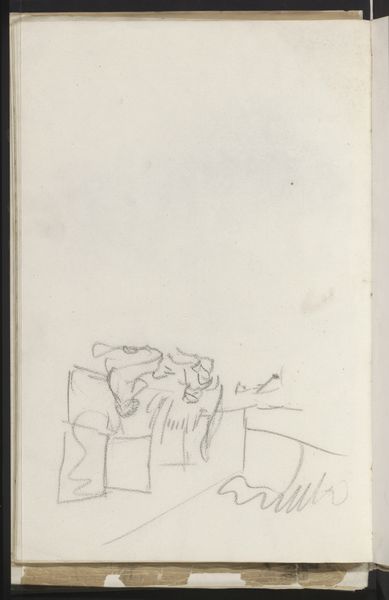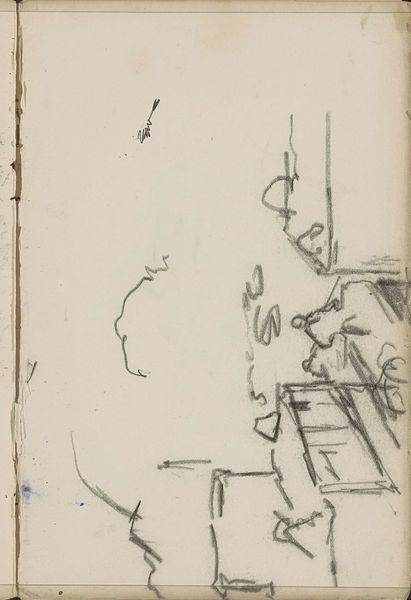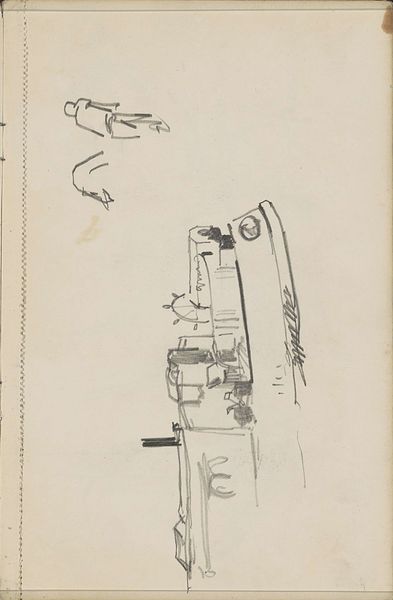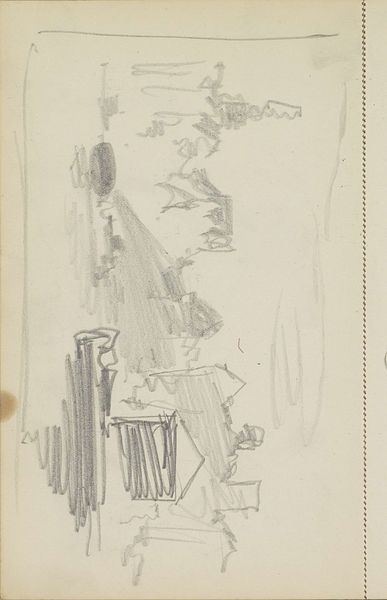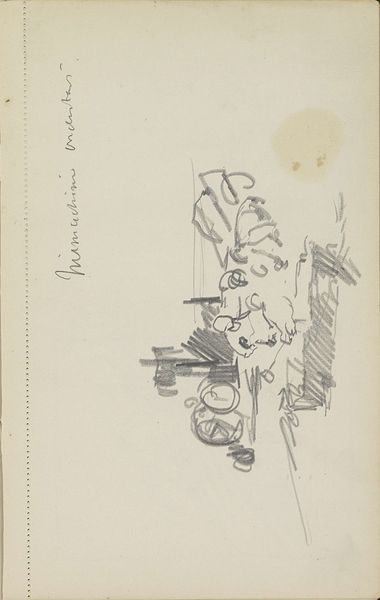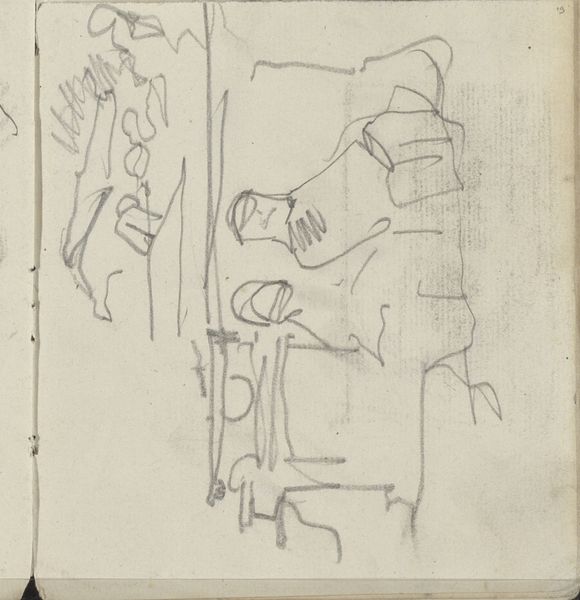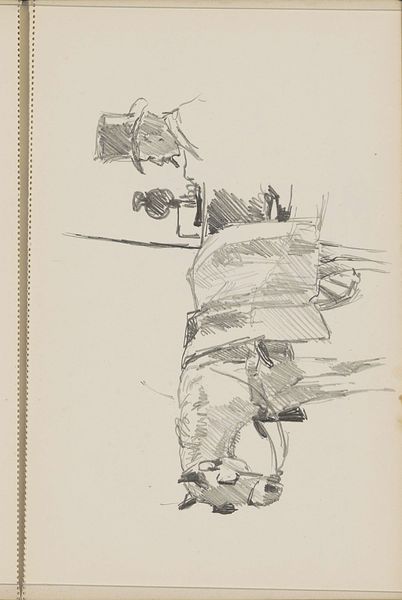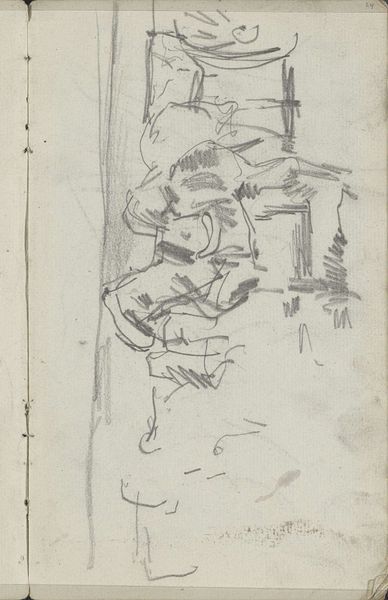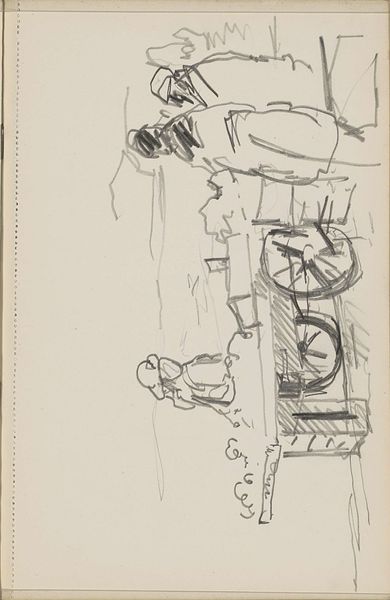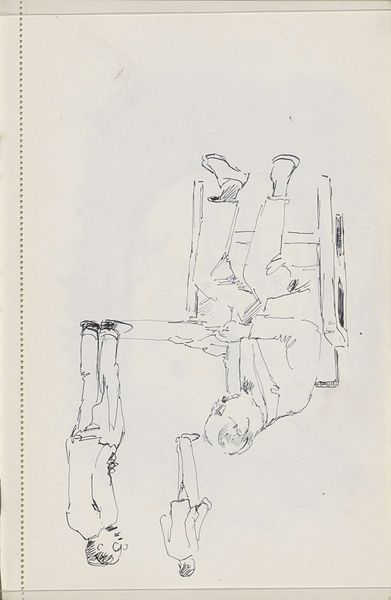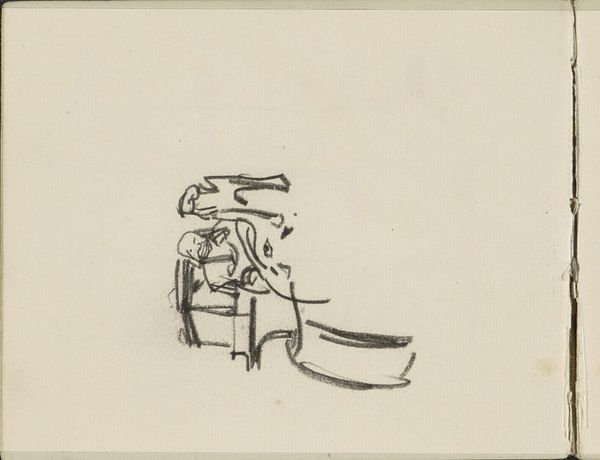
Copyright: Rijks Museum: Open Domain
Editor: This is Cornelis Vreedenburgh’s “Paard en wagen,” created sometime between 1890 and 1946. It’s a pen and ink drawing here at the Rijksmuseum. The linework is so sparse. What do you make of this fleeting sketch? Curator: It’s interesting to consider the *making* of this piece, isn't it? The immediate, almost disposable nature of ink on paper seems to clash with the subject - a horse and carriage, which at the time represented labor, transport, a slower pace of life that was beginning to disappear with industrialization. Editor: Disappear? So, is the medium, this quick sketch, meant to mirror how quickly that way of life was disappearing? Curator: Perhaps. Look at the hurried pen strokes; this isn't about celebrating craftsmanship in the traditional sense, but about documenting a fleeting moment. Pen and ink became readily available and affordable then. Art wasn't just about grand oil paintings but everyday sketches of a changing world, opening up new forms of representation. It democratized not just the subject but also the means of artistic expression. Editor: So, the materials and methods reflect societal shifts and who gets to participate in artmaking? Curator: Exactly! And where. The portability of pen and paper allows for art *en plein air*, enabling this more spontaneous record. What do you think, is the work successful in showing that transformation? Editor: I see your point about how material accessibility reflects a broader social change and the possibility of an end of some social ways, as well as how rapid sketching might document vanishing lifestyles. I hadn’t thought of it that way at first! Curator: Thinking about art in this manner can reshape our interpretations of form and style, revealing social and cultural undercurrents in what we might have thought of a simple landscape sketch.
Comments
No comments
Be the first to comment and join the conversation on the ultimate creative platform.
